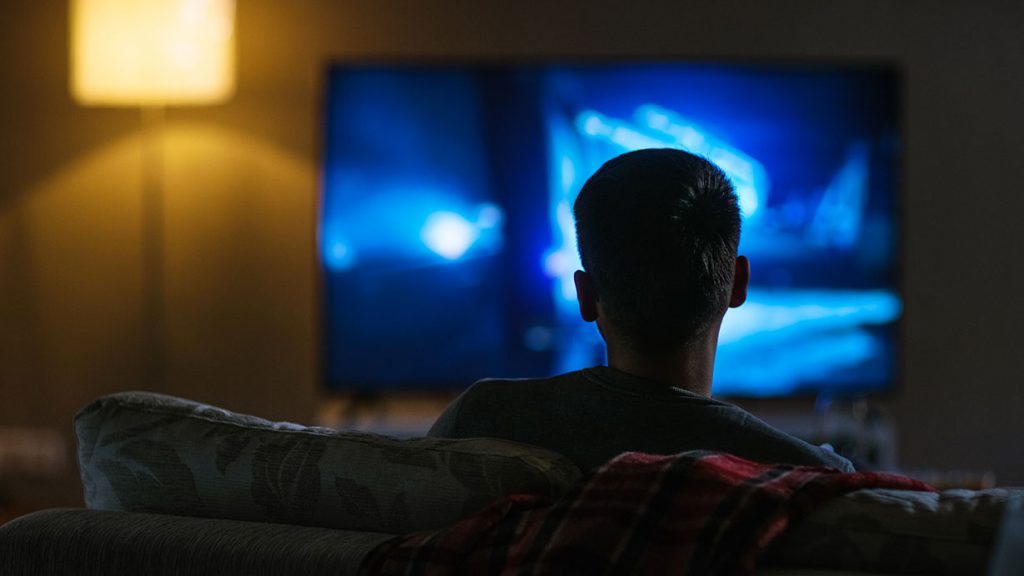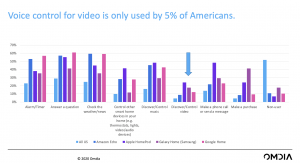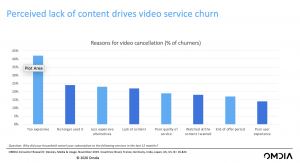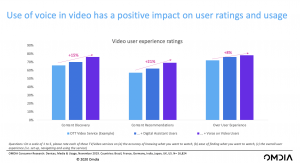TBI Tech & Analysis: How voice-controlled devices affect content consumption
The proliferation of content available to viewers has been a hallmark trend of the past five years and means that assessing how viewers access – and discover – programming is now a vital element for the business.
Here, Maria Rua Aguete, senior research director for TV, video & advertising at TBI sibling OMDIA, provides Richard Middleton with an array of insights into how viewers are adapting their uptake of voice-activated devices to control what they watch.
Voice controlled devices have been on the market for years but their uptake to choose which video content should be watched – a trend that could have a profound impact on the way we consume programming – remains relatively low, at just 5% of Americans. Within those users, it is Apple that leads the way, with almost a quarter of Americans choosing the Apple HomePod as their preferred device, while Samsung’s Galaxy Home and Google Home lie second and third respectively, with Amazon’s Echo fourth. It is worth noting, however, that voice-controlled devices have become a prevalent tool for some daily tasks, with almost a third of Americans using their voice to ‘get their questions answered’ and a quarter using the devices to check the weather.
There are some noticeable deviations in terms of the countries where viewers are employing voice assistants for TV and video control, with Indians embracing the tech the most. Here, 40% of Indians say they currently use such a device, while more than 15% confirm they are interested in the use of voice as a control method for video. Brazil comes next, with 17% of those asked confirming they use a voice controlled device for TV/video, followed by the US, the UK, France, Germany and Japan.
Boxing clever…
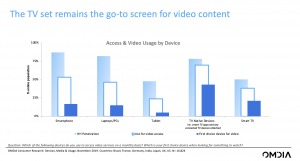 While much is made of the numerous devices on which content can now be watched, the TV remains king, with almost 50% using it as a first choice for video content. Smartphones, which are found in more than 75% of households, are a first choice for viewing for less than 20% of those asked, with laptops faring similarly. Tablets, meanwhile, were even less popular as a first choice.
While much is made of the numerous devices on which content can now be watched, the TV remains king, with almost 50% using it as a first choice for video content. Smartphones, which are found in more than 75% of households, are a first choice for viewing for less than 20% of those asked, with laptops faring similarly. Tablets, meanwhile, were even less popular as a first choice.
And while there might be more content available to subscribers than ever before, finding what is relevant remains the challenge. It is immediately apparent in the reasons why people cancel their video services, with more than one in five stating that a perceived lack of content – despite the immense sizes of many of the libraries – prompted their decision to quit. Behind the cost of a service, the perceived lack of content is among the top four causes of churn, alongside subscribers who claim they no longer use a service and the fact that less expensive alternatives exist.
While finding content might be tricky for subscribers deluged with thousands of hours of options, those who use voice to uncover their programming find the path to a suitable choice is improved. Voice controlled devices help content discovery, the research suggests, with the user experience rating of those using voice to uncover shows substantially higher than someone using just an OTT video service. On the recommendation front, those using voice recorded higher satisfaction levels, with the overall user experience of voice-controlled device users also higher.
Maria Rua Aguete is senior research director for media & entertainment at OMDIA, the global technology research powerhouse which, like TBI, is part of Informa. The data above comes from her recent presentation, Consumer Uptake Of New Tech – Voice AI /Smart TV.

